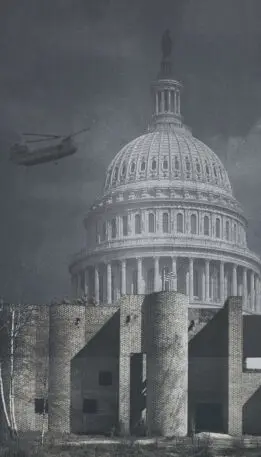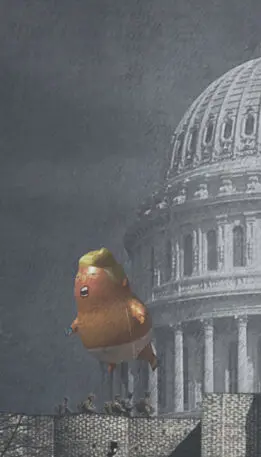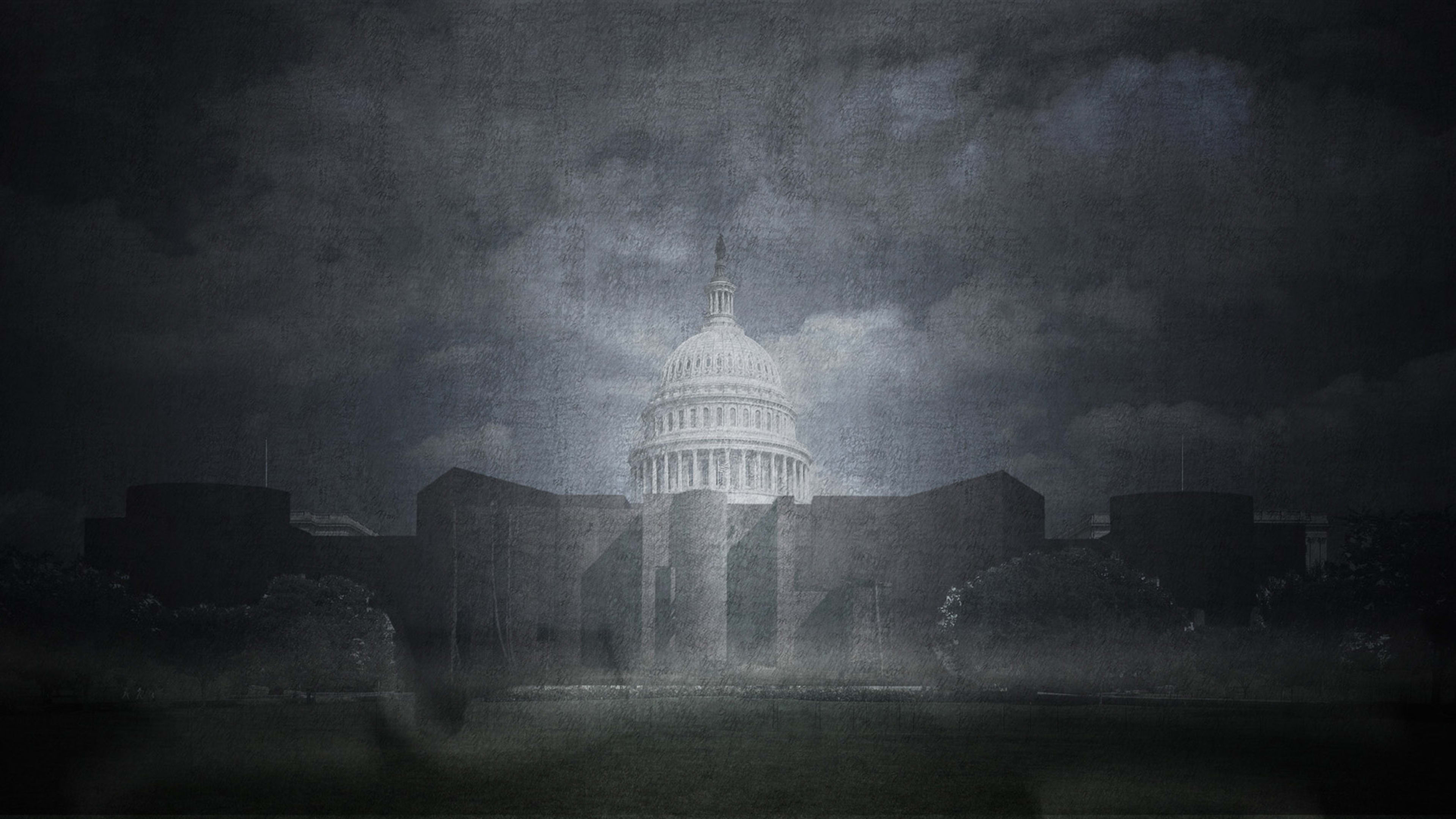Washington, D.C., was always built to be open to the public, which is part of the reason why the Capitol was so easily breached last week. But what if the Capitol weren’t designed with large green space and welcoming stairs? What if the Capitol were designed to frighten you and keep you away?
That’s the vision presented by the Munich-based activist architecture group Opposite Office. They’ve created dystopian renderings of the Capitol building, in which the classical dome design, inspired by Greek and Roman architecture, is surrounded by a brutalist wall of bricks, complete with castle-inspired turrets. This Capitol is not a symbol of democracy. It’s the Capitol Castle, a sealed-off fortress that wants to scare you from even taking a selfie.
“It’s absurd,” admits Opposite Office architect Benedikt Hartl about his own creation. “But the question is relevant: How can we protect our democracy? Capitol Castle is a dystopia, and the answer to this question is of course not a wall or a castle. Western democracy has been dealing with this topic for some time, but no suitable answer has yet been found. Society is dividing more and more.”
As Hartl puts it, his castle is meant to “shake you awake” as a reminder that our democracy is both precious and precarious. But the irony is that, while the Capitol building will (hopefully!) never resemble such a fortress, it’s almost certain to be sealed off through additional measures of security following last week’s insurrection.
Two hundred years ago, Washington, D.C., was built as an architectural embodiment of our democracy. You could literally walk up to the White House, knock on the door, and try to get an audience with the president. You could picnic right on his lawn. Abraham Lincoln insisted that his guards dress in plain clothes so that politics didn’t mimic militarism (while today, everyday cops are decked out like Navy Seals!). And in the century to follow, D.C. constructed many of its protections from potential attackers through subtle, almost imperceptible defenses: trees, berms, and benches. This open space makes a tacit statement, as Hartl says: “Democracy is no castle! Democracy is love!”
But Hartl’s dystopian vision might not be that far off. Lower Manhattan became fortified after 9/11. One World Trade Center features bomb-proof concrete walls, and protective barricades are a common sight during daily life. Abroad, look no further than the U.S. embassy in London, and you’ll see it’s ensconced behind a semicircular pond (aka a moat). Terrorist attacks often lead to dramatic security measures.
I hope that the open era of D.C. isn’t over, and that we never experience our nation’s capital as an authoritarian collection of military checkpoints watching our every move. Because as Bob Peck, principal at the architecture firm Gensler, who previously oversaw D.C. building security as the commissioner of the General Services Administration for eight years under Presidents Clinton and Obama, put it to me last week: “99.9% of the time you don’t need any of this [security] stuff. And we want to design it in a way that that’s the way it looks and operates, rather than disrupting everything. Making the Capitol building more closed off would be a tragedy on its own.”


Recognize your brand’s excellence by applying to this year’s Brands That Matter Awards before the early-rate deadline, May 3.
